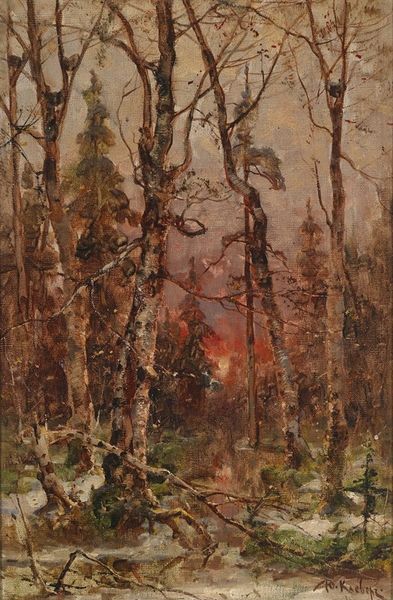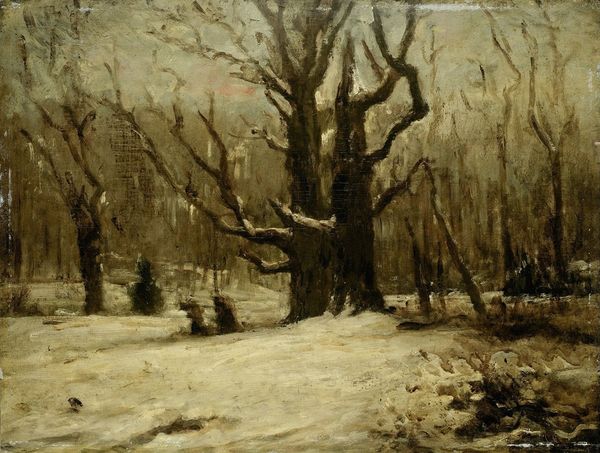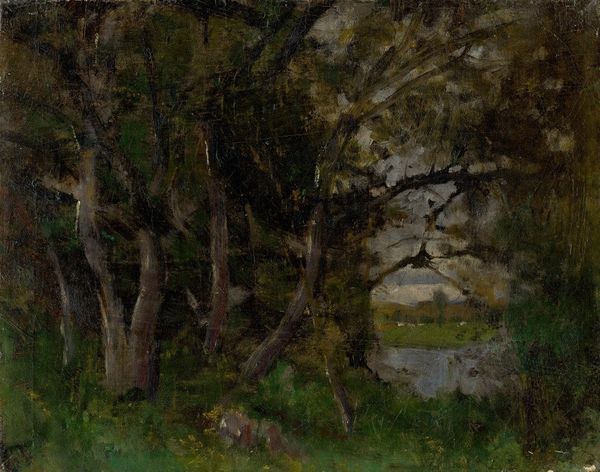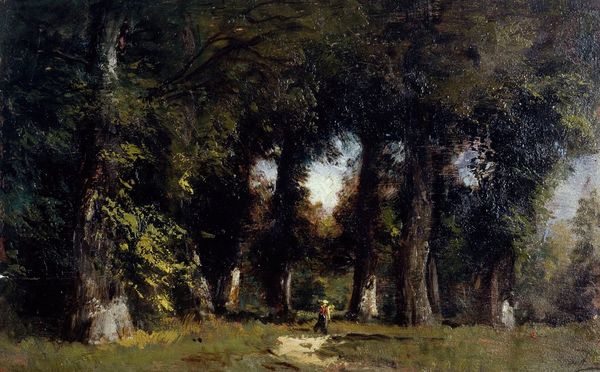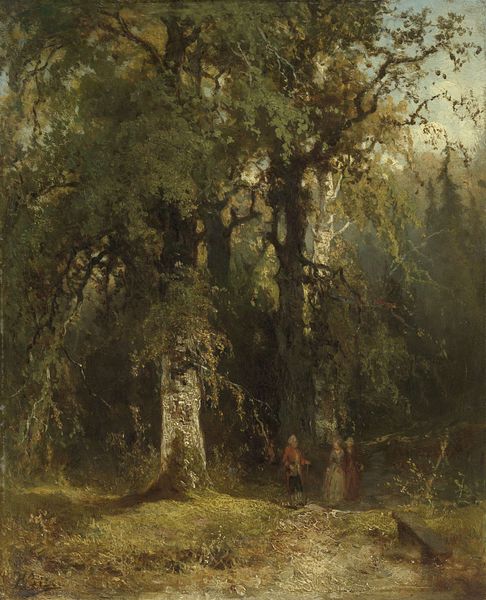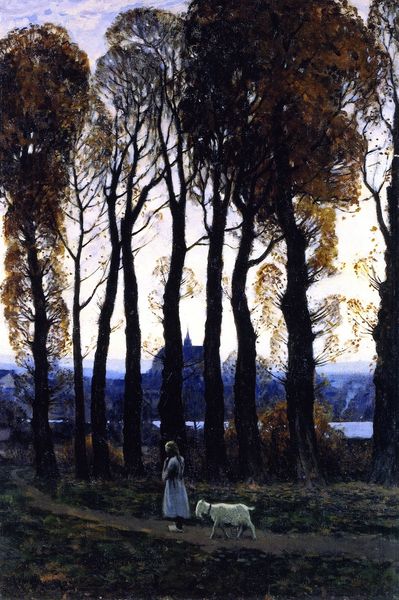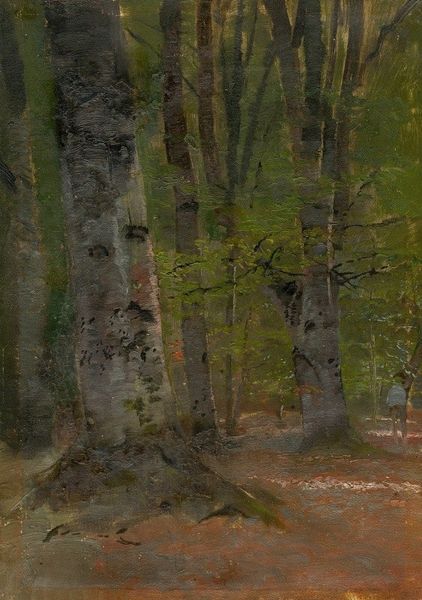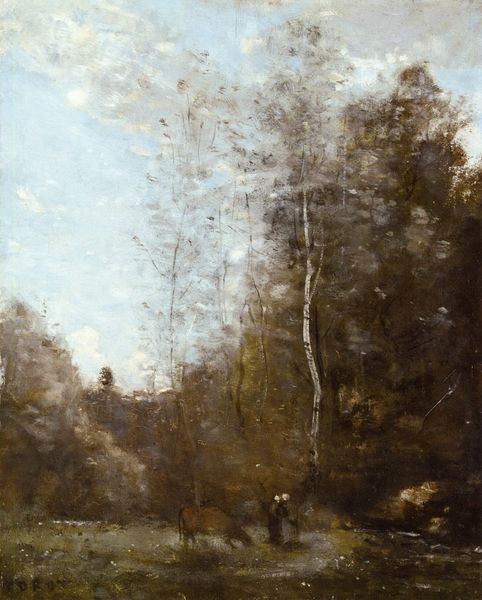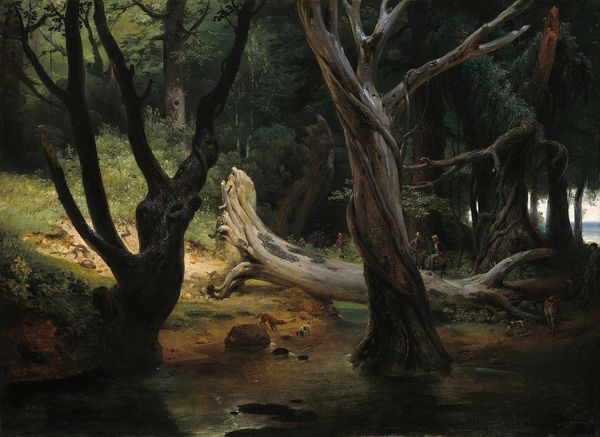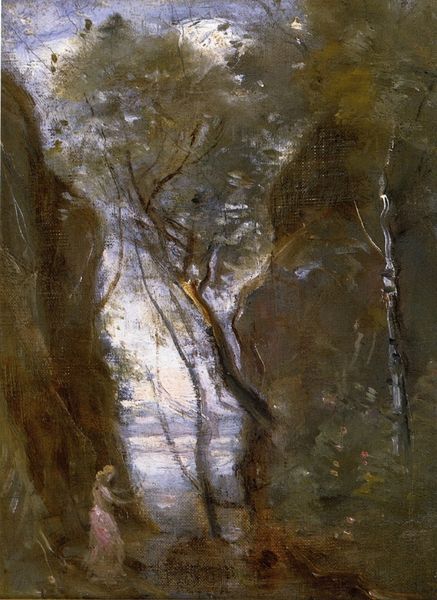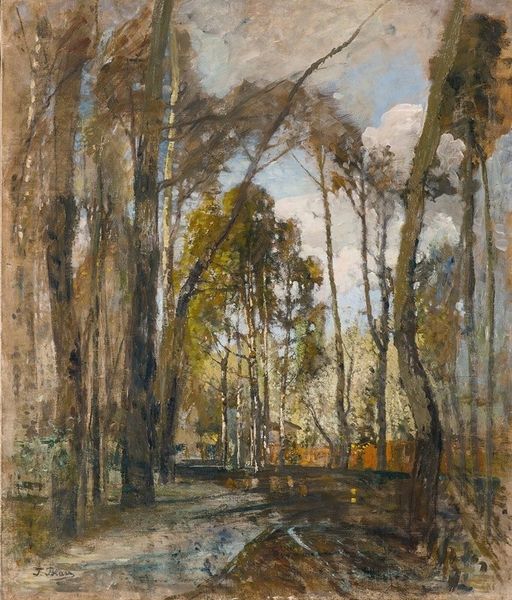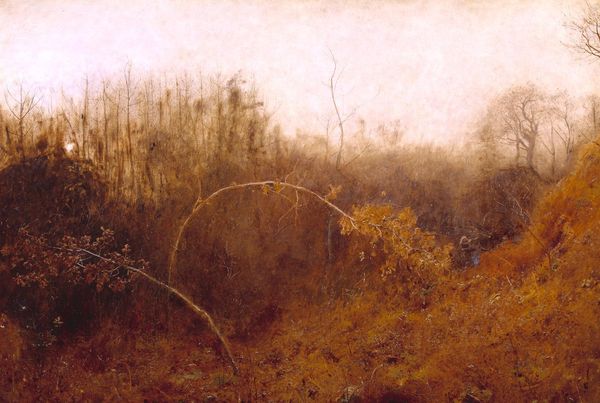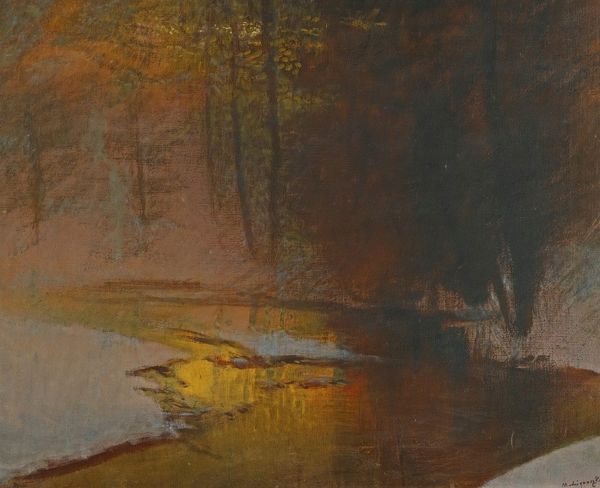
Copyright: Public Domain: Artvee
Curator: This artwork is titled *Sallow in Autumn*, painted by Pekka Halonen in 1907. It appears to be rendered in oil paint. What's your immediate take on it? Editor: The subdued palette strikes me first. It feels muted, melancholic almost, a far cry from the vibrant celebratory hues often associated with autumn. There's a palpable sense of stillness, or maybe… anticipation? Curator: Considering Halonen's Finnish background, and his grounding in the cultural movement that encouraged Finnish artists to forge a national identity distinct from Russian and Swedish influence, how might we contextualize that muted palette? Editor: Perhaps the painting echoes the Finnish spirit of 'sisu' - strength and resilience found in stoic acceptance of harsh realities? These weren’t easy times, with political and social struggles playing out across the land. I also think about how landscape paintings can create cultural identities, as this was made not long before Finland won its independence. Curator: Precisely! We also shouldn't dismiss the stylistic influences at play. While some claim the influence of impressionism here, notice that his contemporaries also adopted Plein-air techniques to depict the Finnish landscape as an emerging symbol of independence. There's that emphasis on direct observation, the capture of a specific moment… Editor: Yet, unlike Monet's fleeting light effects, there's a groundedness. Halonen’s landscape is a tangible, almost symbolic space. And this crooked tree is also fascinating – there is such a presence despite being caught in motion. I wonder how notions of fragility versus perseverance could resonate with contemporary viewers experiencing ecological anxiety and social turmoil? It's hard not to read this kind of image as allegorical now. Curator: And I wonder about the museumification of such landscape, divorced from the artist's community; removed from its source material, what messages about nationhood can persist today, if any? Editor: Exactly. By analyzing its historical context and social resonance, we see this work reflecting a deep dialogue with the environment as cultural mirror. Thanks! Curator: A potent reminder of how deeply interwoven are art, identity, and environment. Thank you.
Comments
No comments
Be the first to comment and join the conversation on the ultimate creative platform.
